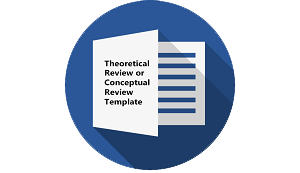THE ANALYSIS OF SEXIST LANGUAGE IN THE QUEEN’S GAMBIT DRAMA SERIES
DOI:
https://doi.org/10.30957/lingua.v20i1.815Keywords:
sexist language;, overt sexism;, indirect sexismAbstract
This research aimed to find out types of overt sexism and indirect sexism as well as analyze the context of the situation on the data found in the drama series The Queen's Gambit which totals seven episodes. The data were in the form of words, phrases, and sentences from the drama series transcripts. This research used the theory of types of sexism by Mills (2008) and the theory of context of the situation by Hymes (1977). This research used a descriptive qualitative method and a non-participant observation method to analyze the data. In the data collection, this research used the transcript from each episode of the drama series to examine the data. The next step is watching the drama series The Queen's Gambit to find out the situation from the data obtained in the transcript. Then, this research identified, coded, classified, and analyzed the data that has been obtained. As a result, 70 data were observed, with 32 data on the type of overt sexism and 38 data on the type of indirect sexism and the most frequently occurring data is presupposition with a total amount of 14 data has been found.
Downloads
References
Aboul-Hagag, K. E., Mohamed, S. A., Hilal, M. A., & Mohamed, E. A. (2011). Determination of sex from
Alzahrani, Eman. 2019. The Role of Gender in Language Change. Scotland: University of Glasgow
Beard, J. R. (1854). Cassell's lessons in English. From the 'Popular educator'.. Great Britain: (n.p.).
Bravo, B. G. (2009). The Diminutive Suffix "-Et/-Ette": The Role of the Internet in Its Study, 133–145.
Burton, D. (1982) ‘Through glass darkly; through dark glasses’, pp. 195–214, in Carter, R. ed. Language and Literature: An Introductory Reader in Stylistics, London, Allen and Unwin.
Caldas-Coulthard, C. (1995) ‘Man in the news: the misrepresentation of women speaking in news-as-narrative discourse’, pp. 226–40, in Mills, S. ed. Language and Gender: Interdisciplinary Perspectives, Harlow, Longman.
Carbaugh, D. and Boromisza-Habashi, D. (2015). Ethnography of Communication. In The International Encyclopedia of Language and Social Interaction (eds K. Tracy, T. Sandel and C. Ilie). https://doi.org/10.1002/9781118611463.wbielsi119
Curzan, A. (2009) Gender shifts in the history of English. Cambridge, United Kingdom: Cambridge
Curzan, A., Algeo, J., & Aarts, B. (2003). Gender shifts in the history of English (studies in English language). Cambridge University Press.
Dachi, S. L. N. (2019). WACANA SEKSISME DALAM BERITA “SURGANYA MESUM†(Analisis
Dyhouse, C. (2010). Glamour: Women, history, feminism. ZED.
Forensic Sciences, 1(2), 80–86. https://doi.org/10.1016/j.ejfs.2011.03.001
hand dimensions and index/ring finger length ratio in Upper Egyptians. Egyptian Journal of
https://doi.org/10.1007/978-3-319-90454-2_4
Hymes, Dell. 1974. Foundations of Sociolinguistics: An Ethnographic Approach. Philadelphia: University of Pennsylvania.
in Online Newspapers. PLoS ONE 11(2): e0148434. https://doi.org/10.1371/journal.pone.0148434
Jatmiko, O. D. (2018). A Sociolinguistics Study of Swearing in Heist. English Language & Literature
Jia S, Lansdall-Welfare T, Sudhahar S, Carter C, Cristianini N (2016) Women Are Seen More than Heard
Journal, VII (2018), 3rd ser., 265-274.
Kramarae, C. and Treichler, P. (1985) A Feminist Dictionary, London, Pandora.
LaFrance, M., & Woodzicka, J. A. (1998). No laughing matter: Women’s verbal and nonverbal reactions
Leaper, C., & Brown, C. S. (2014). Sexism in schools. In L. S. Liben & R. S. Bigler (Eds.), Advances in child development and behavior, Vol. 47. The role of gender in educational contexts and outcomes (pp. 189–223). Elsevier Academic Press.
Malinowski's (1989). ‘context of situation’. Language & Communication, 9(4), 259-267. https://doi.org/10.1016/0271-5309(89)90023-2
Mateo, R. M., & Torrijos, C. C. (2021, March 9). Literary and cinematic indoctrination: Female characterization in three films versions of Cinderella. Estudios de Teoria Literaria. Universidad Nacional de Mar del Plata.
McKechnie L. E. F. (2008). Observational research. In Given L. M. (Ed.), The Sage encyclopedia of qualitative research methods (pp. 573–577). Thousand Oaks, CA: Sage
McKechnie L. E. F. (2008). Observational research. In Given L. M. (Ed.), The Sage encyclopedia of qualitative research methods (pp. 573–577). Thousand Oaks, CA: Sage.
Mills, J. (1989) Womanwords, Harlow, Longman.
Mills, S. (2008). Language and sexism. Cambridge: Cambridge University Press.
Murphy, M. L. (1992). Introduction: Women and Linguistic Innovation. Women and Language, 15(1), 1. Retrieved from http://search.proquest.com.ezaccess.library.uitm.edu.my/docview/198806686?accountid=42518
Oware, M. (2018). Bad Bitches?. In: I Got Something to Say. Palgrave Macmillan, Cham.
Pagi Radar Bandung Edisi 17 November 2018). Universitas Komputer Indonesia, (November), 1–11. https://elibrary.unikom.ac.id/id/eprint/2083/12/UNIKOM_41815174_SRI LISTIA N. DACHI_JURNAL.pdf
Paludi, M. A. (2010). Feminism and women's Rights Worldwide. Santa Barbara, CA: Praeger.
Research Anthology on Innovative Research Methodologies and Utilization Across Multiple Disciplines. (2021). Amerika Serikat: IGI Global.
Romaine, S. (1999). Communicating gender. Lawrence Erlbaum Associates, Publishers.
Romaine, S. (2003) ‘Variation in language and gender’, in J. Holmes and M. Meyerhoff, eds, The Handbook of Language and Gender, Oxford: Blackwell, pp. 98-118.
Rose, T. (2011). There Are Bitches and Hoes (J. M. Humez, Ed.). In 2352937727 1602857695 G. Dines
Sadiqi, Fatima (2006). Gender in Arabic (pp. 1). Brill Encyclopedia of linguistics
SAGE Publications.
Schultz, M. (1990) ‘The semantic derogation of women’, pp. 134–48, in Cameron, D. ed. The Feminist Critique of Language: A Reader, 1st edition, London, Routledge.
to sexist humor. Prejudice: The Target’s Perspective., 61–80. Retrieved from http://ovidsp.ovid.com/ovidweb.cgi?T=JS&PAGE=reference&D=psyc3&NEWS=N&AN=1998-07621-003
Turner, L. H., West, R. (2022). Interpersonal Communication. USA: SAGE Publications.
University Press.
Ursea Mayoriska, Y. F. (2022). Sexist Language of the Characters in the Movie Colette (pp. 1057). JoLLA: Journal of Language, Literature, and Arts
Wacana Kritis Sara Mills Mengenai Wacana Seksisme dalam Berita Surganya Mesum pada Harian
Wareing, S. (1994) ‘And then he kissed her: the reclamation of female characters to submissive roles in contemporary fiction’, pp. 117–36, in Wales, K. ed. Feminist Linguistics in Literary Criticism, Woodbridge, Boydell and Brewer.
Wareing, Shan (2004). Language, Society and Power, Language and Gender (pp. 65). Psychology Press
Downloads
Published
How to Cite
Issue
Section
License
Authors who publish with this journal agree to the following terms:
- Authors retain copyright and grant the journal right of first publication with the work simultaneously licensed under a Creative Commons Attribution-ShareAlike 4.0 International License that allows others to share the work with an acknowledgement of the work's authorship and initial publication in this journal.
- Authors are able to enter into separate, additional contractual arrangements for the non-exclusive distribution of the journal's published version of the work (e.g., post it to an institutional repository or publish it in a book), with an acknowledgement of its initial publication in this journal.
- Authors are permitted and encouraged to post their work online (e.g., in institutional repositories or on their website) prior to and during the submission process, as it can lead to productive exchanges, as well as earlier and greater citation of published work (See The Effect of Open Access).















